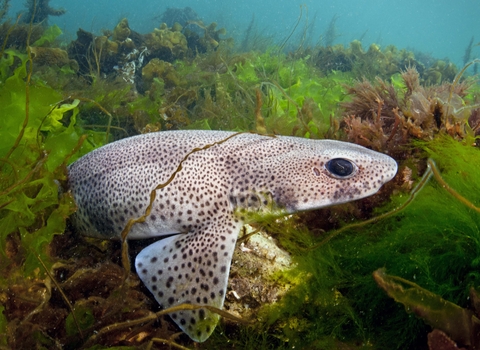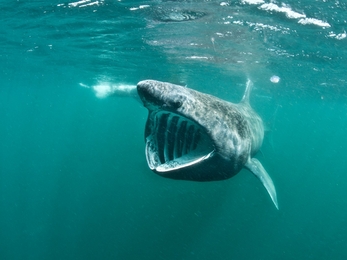What are ocean sediments and why are they important?
Much of our coastal and offshore seafloor are covered in thick, muddy, sandy and silty sediment. Often hundreds of kilometres from the surface, these sediment habitats are formed over thousands of years when marine animals and phytoplankton die, sink to the seafloor and become incorporated into the sediment.
Ocean sediments are incredibly important for marine wildlife, as they provide a home for a diverse array of marine invertebrates and fish, as well as providing a rich foraging ground for larger predators to feed on. However, sediment habitats also store huge amounts of carbon, which makes them an important natural habitat in tackling climate change.
A natural solution to the climate crisis
Oceans absorb 20-35% of human-made CO2 emissions every year!
All animals and plants are carbon stores. The carbon is incorporated into their tissues at first, and then later transferred into the mud and sediments when they die and sink to the seafloor.
Surprisingly, the biggest contributor of carbon to seafloor ocean sediments are not the largest animals in our seas such as whales, dolphins and basking sharks. Instead some of our smallest marine organisms are the big hitters, including phytoplankton, which has the greatest impact, forming layers of sediment on the seafloor, eventually storing carbon for thousands of years if left undisturbed. Globally, 10 billion tonnes of carbon are transferred to seabed sediments when phytoplankton die or are eaten then excreted every year!
For maritime nations such as the UK, with control over large areas of sea and features like fjords and sea lochs, coastal and offshore sediments are hugely important in tackling the climate and ecological crises.
Threats and pressures
Unfortunately, some human activities damage marine sediments, releasing carbon that otherwise may have been locked up for millennia. Dredging and certain types of marine development for example, not only disrupt ocean sediment’s ability to store carbon, but destroy habitats and wildlife too.
Conservation and recovery
Greater restrictions of damaging activities in the marine environment and the implementation of Highly Protected Marine Areas will help protect marine biodiversity and keep ocean sediment carbon safely out of the atmosphere. A spatial approach to marine management can help guide how this can be done justly while mitigating the most harmful practices.
Safeguarding ocean sediments and other important habitats, allows them to thrive and recover from past degradation, acting as natural solutions to climate change on a grand scale.




